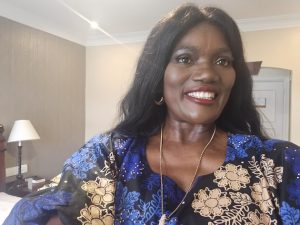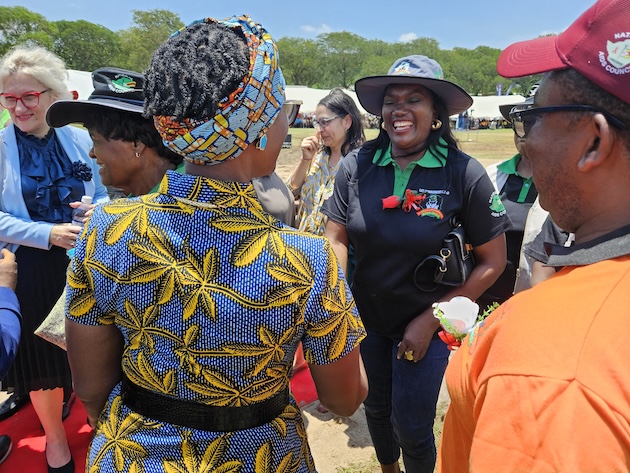- Bombardier’s newest apprenticeship program, in collaboration with WSU Tech, will focus on training future airframe and powerplant (A&P) technicians
- It is the first state–registered A&P technician apprenticeship program in Kansas
- During the two–year program, students will complete hands–on training at Bombardier Group’s Wichita site and in–class courses at WSU Tech
- With the start of this program, the Bombardier Group continues to grow its footprint in Wichita and commitment to expanding its aftermarket services through the training and hiring of skilled professionals
WICHITA, Kan., Feb. 14, 2024 (GLOBE NEWSWIRE) — Bombardier today announced it has collaborated with Wichita State University Campus of Applied Sciences and Technology (WSU Tech) to create an apprenticeship program aimed at training future airframe and powerplant (A&P) mechanics. During the two–year paid apprenticeship program, students will complete hands–on instruction at Bombardier Group’s Wichita site and in–class training at WSU Tech. They will have the opportunity to learn from experienced instructors and aviation maintenance leaders, as well as gain valuable knowledge on Bombardier’s world–class portfolio of business jets.
Upon successful completion of this state–registered A&P apprenticeship program – the first of its kind in the state of Kansas – students will have obtained their Federal Aviation Administration (FAA) A&P certification, as well as on–the–job training. Their job classification will transition from apprentice to full–time A&P technician at Bombardier, expanding the company’s technician roster and enabling the growing delivery of timelier OEM maintenance services.
“We are pleased to deepen our roots in Wichita and the U.S. through the launch of this foundational program in collaboration with WSU Tech, a leader in aviation mechanic training in Wichita,” said Paul Sislian, Executive Vice–President, Aftermarket Services & Bombardier Strategy, Bombardier. “The start of this apprenticeship program highlights Bombardier Group’s ongoing commitment to not only expanding its footprint in Wichita, but to training, hiring and retaining qualified professionals, which will further increase our ability to provide exceptional customer service to our clients.”
“WSU Tech is excited to join with Bombardier to provide our students with an extraordinary learning opportunity at their state–of–the–art facility in Wichita,” said Dr. Sheree Utash, President of WSU Tech and VP of Workforce Development at WSU. “This collaboration demonstrates the power of uniting education, government, business, and industry, resulting in success. We are profoundly grateful for the fiscal support from the State of Kansas, which played a crucial role in making this opportunity a reality. Through such dynamic alliances, we can offer our students impactful, real–world experiences, significantly enhancing our skilled workforce and reinforcing our strong commitment to applied learning.”
Over the past few years, Bombardier has expanded its service centre network around the world and has since added close to one million sq. ft. of new service capacity to its worldwide aftermarket footprint. By training and hiring highly skilled technicians, Bombardier further showcases its commitment to developing its aerospace pipeline.
On top of its widely recognized and growing service centre, Bombardier also has a strong footprint in the Air Capital of the world with the presence of Bombardier Defense and its world–renown Bombardier Flight Test Centre, which is currently putting the world’s fastest and farthest flying business jet, the Global 8000 aircraft, through its paces as part of an ongoing certification campaign ahead of its expected entry into service in 2025.
About Bombardier
Bombardier (BBD–B.TO) and its subsidiaries (Bombardier Group), is a global leader in aviation, focused on designing, manufacturing, and servicing the world's most exceptional business jets. Bombardier’s Challenger and Global aircraft families are renowned for their cutting–edge innovation, cabin design, performance, and reliability. Bombardier has a worldwide fleet of more than 5,000 aircraft in service with a wide variety of multinational corporations, charter and fractional ownership providers, governments, and private individuals. Bombardier aircraft are also trusted around the world in government and military special–mission roles leveraging Bombardier Defense’s proven expertise.
Bombardier is headquartered in Greater Montréal, Québec, and through the Bombardier Group, operates aerostructure, assembly and completion facilities in Canada, the United States and Mexico. Bombardier Group’s robust customer support network services the Learjet, Challenger and Global families of aircraft, and includes facilities in strategic locations in the United States and Canada, as well as in the United Kingdom, Germany, France, Switzerland, Austria, the UAE, Singapore, China and Australia. For corporate news and information, including Bombardier’s Environmental, Social and Governance report, as well as the company’s plans to cover all its flight operations with Sustainable Aviation Fuel (SAF) utilizing the Book and Claim system visit bombardier.com. Learn more about Bombardier’s industry–leading products and customer service network at businessaircraft.bombardier.com. Follow us on X @Bombardier.
About WSU Tech
WSU Tech, formally known as Wichita State University Campus of Applied Sciences and Technology, located in Wichita, KS, is the state’s leader in modern technical education, offering over 100 degree and certificate options in aviation, health care, manufacturing, design, information technology, culinary, and business. In 2018, WSU Tech was named the 2nd fastest growing college among two–year colleges by The Chronicle of Higher Education. WSU Tech serves as managing partner of the National Center for Aviation Training (NCAT) in Wichita, KS and is fully accredited by The Higher Learning Commission and is a Kansas Board of Regents institution. For more information, visit www.WSUTECH.edu.
FORWARD–LOOKING STATEMENTS
Certain statements in this announcement are forward–looking statements based on current expectations. By their nature, forward–looking statements require us to make assumptions and are subject to important known and unknown risks and uncertainties, which may cause our actual results in future periods to differ materially from those set forth in the forward–looking statements. Please refer to the “Forward–Looking Statements” disclaimer contained in Bombardier’s latest published financial report which is available on the corporation’s website at bombardier.com.
Bombardier, Challenger, Global, Global 8000 and Learjet are registered or unregistered trademarks of Bombardier Inc. or its subsidiaries.
For information
Stephanie Faraggi
Bombardier
+ 1 514 513 7830
stephanie.faraggi@aero.bombardier.com
Mandy Fouse
WSU Tech
+ 1 316 204 8272
afouse@wsutech.edu

GLOBENEWSWIRE (Distribution ID 9037557)






